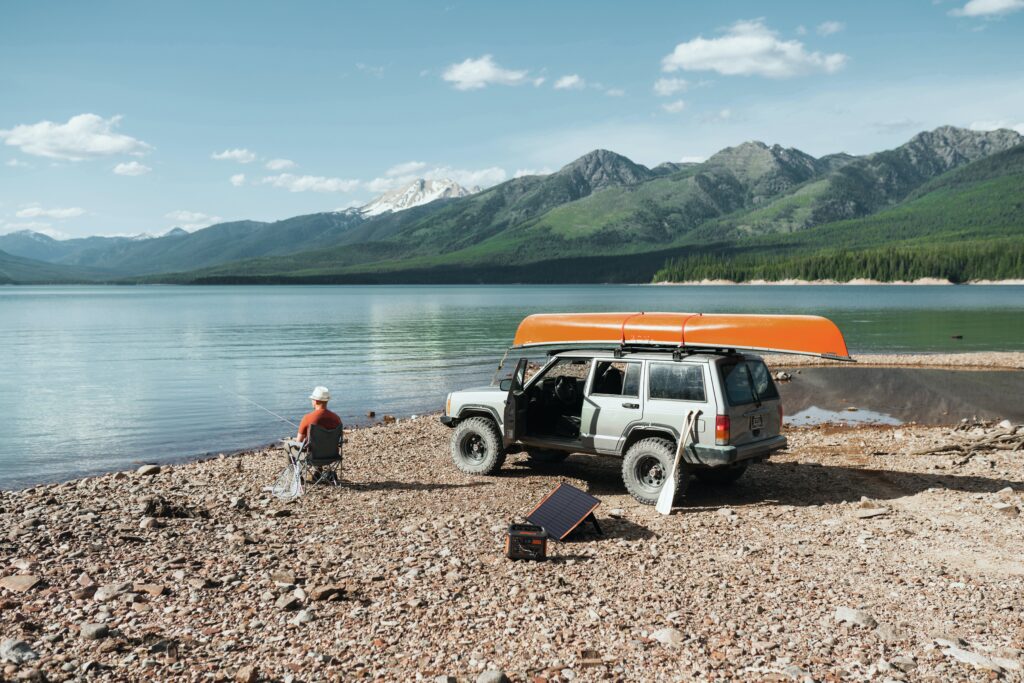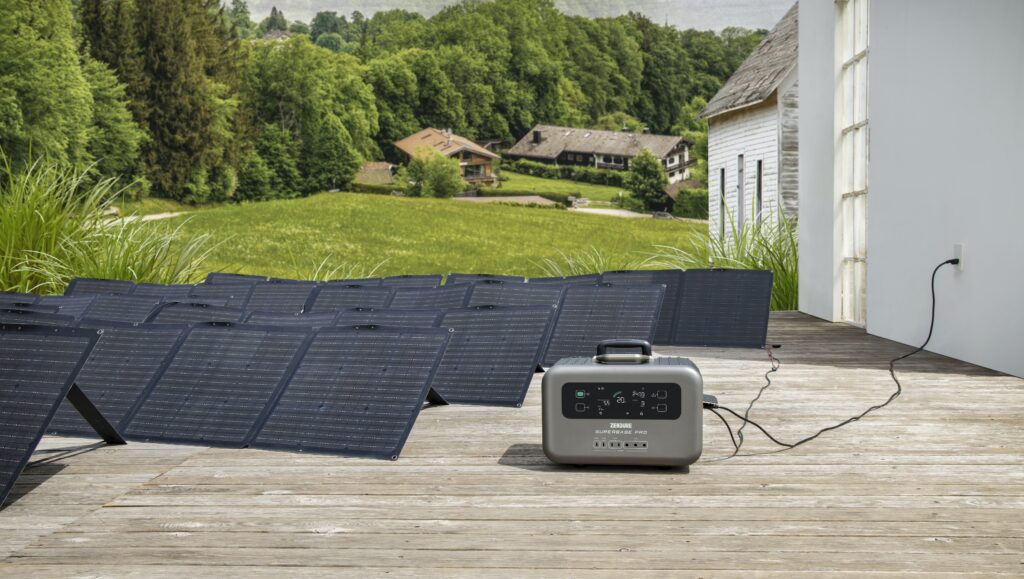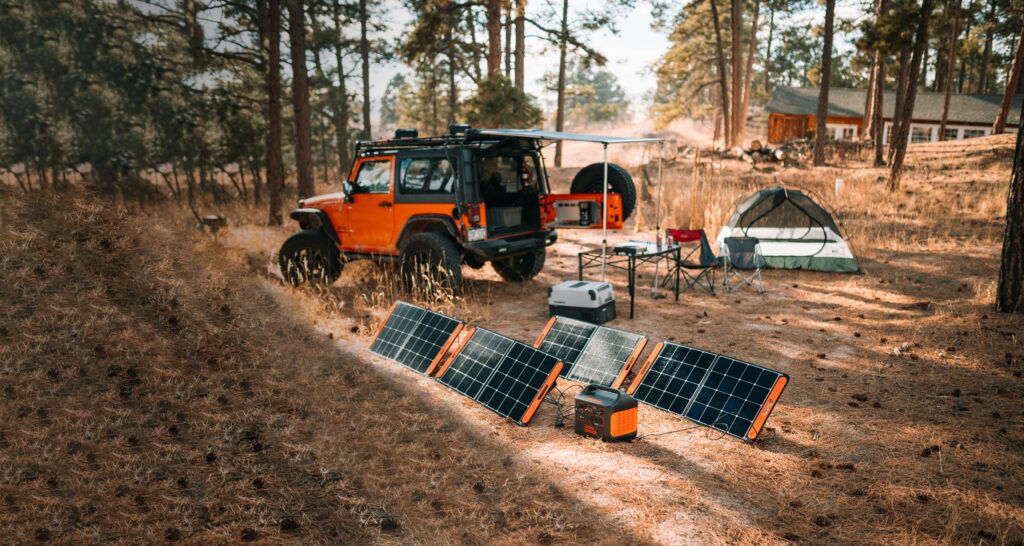Imagine having a portable power source that harnesses the sun’s energy to keep all your devices charged, even in the great outdoors. But here’s the burning question: does a solar generator need an inverter? This article aims to shed light on this topic by exploring the role of inverters in solar generators, why they are essential, and the benefits they bring. So sit back, relax, and let’s unravel the fascinating world of solar power and inverters.
Understanding Solar Generators
What is a solar generator?
A solar generator is a device that converts sunlight into electricity, providing a portable and environmentally-friendly power source. It consists of solar panels, a charge controller, a battery, and an inverter. Solar generators are commonly used for camping, outdoor activities, emergencies, and off-grid living.
How does a solar generator work?
Solar generators harness energy from the sun through solar panels, which consist of photovoltaic cells. These cells convert sunlight into direct current (DC) electricity. The charge controller regulates the flow of energy, ensuring that the battery receives a consistent and optimal charge. The battery stores the electricity generated by the solar panels. Finally, the inverter converts the stored DC electricity into usable alternating current (AC) electricity, which can power household appliances and devices.
Role of an Inverter in a Solar Generator
What is an inverter?
An inverter is an essential component of a solar generator. It is a device that converts DC electricity from the battery into AC electricity, which is compatible with most appliances and devices. In other words, the inverter transforms the energy stored in the battery into a power source that can be used to run electronic equipment.
Why is an inverter needed in a solar generator?
Without an inverter, the DC electricity stored in the battery would not be suitable for powering common household appliances and devices that require AC electricity. Thus, the inverter plays a crucial role in making the solar generator’s energy output compatible with the electrical needs of various devices. An inverter ensures that you can use your solar generator to run your laptop, charge your phone, or power other appliances seamlessly.

Different Types of Inverters
Pure sine wave inverters
A pure sine wave inverter produces electricity that mimics the clean and smooth waveform of the electricity supplied by the utility grid. This type of inverter is highly efficient and compatible with almost all devices, including sensitive electronics. Pure sine wave inverters are the preferred choice for powering appliances with motors, such as refrigerators, air conditioners, and power tools.
Modified sine wave inverters
Modified sine wave inverters generate electricity in a step-like waveform, with some distortion compared to the utility grid’s smooth waveform. While these inverters are more affordable, they may not be suitable for certain devices. Some appliances, such as fans, fluorescent lights, and older analog devices, may experience decreased performance or produce a buzzing sound when powered by a modified sine wave inverter.
Square wave inverters
Square wave inverters produce a blocky waveform that is less refined compared to the smooth waveform of the utility grid. They are the least expensive type of inverter but are also the least compatible with sensitive electronics. Square wave inverters are generally used for powering basic electronics and non-sensitive devices, such as simple lighting systems.
Impact of Not Using an Inverter
Incompatibility of DC-powered appliances
If you choose not to use an inverter in your solar generator, you will be limited to using only DC-powered appliances. Most household appliances and devices, such as laptops, televisions, and kitchen appliances, require AC electricity to function. Without an inverter, you won’t be able to power these devices with your solar generator, greatly restricting its usability.
Risk of power loss
Without an inverter, the stored DC electricity in the battery of your solar generator cannot be efficiently converted into usable AC electricity. This can lead to power loss and reduced energy efficiency. Additionally, the lack of an inverter may cause voltage fluctuations, potentially damaging your devices and appliances.
Efficiency concerns
An inverter plays a vital role in optimizing the energy output of a solar generator. Without an inverter, the energy stored in the battery may not be effectively converted into usable power. This can result in lower overall efficiency and reduced battery life. Using an inverter ensures that you can make the most out of your solar generator’s energy potential.

Benefits of Using an Inverter
Increase in energy efficiency
By incorporating an inverter into your solar generator, you can maximize the efficiency of energy conversion from DC to AC. Inverters are designed to minimize energy waste during the conversion process, ensuring that more of the stored energy in the battery is efficiently utilized. This leads to higher overall energy efficiency and a longer-lasting power source for your devices.
Expansion of device compatibility
One of the primary advantages of using an inverter is the ability to power a wide range of devices and appliances. With an inverter, you can connect and use AC-powered electronics seamlessly, including laptops, televisions, gaming consoles, and kitchen appliances. The versatility provided by an inverter significantly expands the range of applications for your solar generator.
Safe use of solar power
Inverters are equipped with safety mechanisms that protect your devices and appliances from potential damage. By converting DC electricity to AC, an inverter ensures that the output voltage is stable and within the appropriate range for safe usage. Additionally, inverters often come with built-in protection features such as overload protection and surge suppression, safeguarding your valuable devices against electrical surges and fluctuations.
Installation of an Inverter
Step-by-step guide to installing an inverter
- Choose a suitable location for your inverter installation, keeping in mind factors such as ventilation and accessibility.
- Mount the inverter securely on a wall or in a specific enclosure.
- Connect the positive and negative terminals of the battery to the corresponding terminals on the inverter.
- Connect the AC output terminals of the inverter to the desired electrical load or to your home’s electrical system.
- Follow the manufacturer’s instructions to configure and set up any necessary settings on the inverter.
- Double-check all connections and ensure that they are tight and secure.
- Test the inverter by powering on and verifying that it is functioning correctly.
Safety measures during installation
During the installation process, it is important to prioritize safety. Here are some safety measures to consider:
- Wear appropriate personal protective equipment, such as gloves and safety glasses, to protect against potential electrical hazards.
- Always work with the solar generator and inverter in a well-ventilated area to prevent the buildup of any harmful gases.
- Turn off all power sources and disconnect the solar generator from any energy source before beginning the installation.
- Follow the manufacturer’s guidelines and instructions carefully to ensure correct and safe installation.
- If you are unsure about any aspect of the installation, it is recommended to consult a professional electrician or solar installer.
Professional installation vs DIY installation
The decision to hire a professional electrician or solar installer for the installation of your inverter depends on various factors, including your level of technical expertise and local regulations. While DIY installation can save money, it requires a good understanding of electrical systems and safety precautions. On the other hand, professional installation ensures compliance with electrical codes and standards, minimizing the risk of errors or safety hazards. It is advisable to consult with an expert or seek professional assistance if you have any doubts or concerns about the installation process.

Inverter Selection and Sizing
How to select an inverter?
When selecting an inverter for your solar generator, consider the following factors:
- Power requirements: Determine the total power consumption of the devices and appliances you intend to power with the inverter. Choose an inverter that can handle the estimated load comfortably.
- Waveform type: Consider whether you need a pure sine wave, modified sine wave, or square wave inverter based on your device compatibility requirements and budget.
- Efficiency: Look for inverters with high efficiency ratings to minimize energy loss during conversion.
- Features: Consider additional features such as overload protection, surge suppression, and remote monitoring capabilities, depending on your specific needs.
What size inverter do you need?
The size of the inverter you need depends on the total power consumption of the devices you plan to power simultaneously. To determine the required size, add the wattage of all the devices and appliances you want to run at the same time. It is recommended to choose an inverter with a capacity slightly higher than the calculated value to account for any power surges or fluctuations. For example, if the total wattage of your devices is 1500W, consider selecting an inverter with a capacity of 2000W or higher.
Maintenance and Care for Inverters
Common issues with inverters
Inverters, like any electronic device, may encounter certain issues over time. Common issues include:
- Overheating: Inverters may overheat due to excessive load, inadequate ventilation, or poor installation. Overheating can cause decreased performance or even complete failure.
- Faulty wiring or connections: Loose or damaged wiring and improper connections can lead to performance issues or electrical faults in the inverter.
- Component failure: Over time, certain components in the inverter may deteriorate or fail, resulting in reduced performance or complete malfunction.
- Voltage fluctuations: In some cases, the inverter may not provide a stable output voltage, leading to problems with connected devices.
Troubleshooting tips for inverters
If you encounter issues with your inverter, here are some troubleshooting tips:
- Check the wiring and connections to ensure they are secure and free from damage.
- Verify that the inverter is receiving an adequate power supply from the solar panels and battery.
- Ensure proper ventilation to prevent overheating.
- If possible, check the inverter’s display or interface for error messages or diagnostic information.
- Consult the manufacturer’s manual or contact customer support for specific troubleshooting steps related to your inverter model.
How often should inverters be replaced?
The lifespan of an inverter can vary depending on factors such as usage, maintenance, and the quality of the product. Generally, well-maintained inverters can last for 10 to 15 years. However, if an inverter starts to experience significant issues, such as frequent failures or a decline in performance, it is recommended to consider replacing it. Regular maintenance, including cleaning, checking connections, and monitoring performance, can help prolong the lifespan of the inverter.
Cost Implications of Using an Inverter
Cost of purchasing an inverter
The cost of purchasing an inverter for your solar generator depends on various factors, including the type of inverter, capacity, features, and brand. Pure sine wave inverters tend to be more expensive compared to modified sine wave and square wave inverters due to their superior performance and compatibility. Additionally, inverters with higher capacity or advanced features may come with a higher price tag. It is important to consider the long-term benefits and compatibility requirements when evaluating the cost of an inverter.
Effect on overall solar generator cost
Adding an inverter to your solar generator will increase the overall cost of the system. In addition to the cost of the inverter itself, you may also need to consider the cost of additional components, such as cables and connectors, that are necessary for proper installation and usage. However, the benefits of using an inverter, including expanded device compatibility and increased energy efficiency, often outweigh the initial investment cost.
Potential savings from using an inverter
Despite the initial cost of adding an inverter to your solar generator, the long-term savings can be significant. By utilizing AC electricity, you can power a wide range of devices and appliances, eliminating the need for separate DC-powered alternatives. This can result in reduced energy consumption and lower utility bills. Additionally, the increased energy efficiency provided by an inverter allows you to maximize the utilization of the solar generator’s stored energy, further enhancing potential savings over time.
Conclusion: Is an Inverter Necessary for a Solar Generator?
Summarizing the need for an inverter in a solar generator
In conclusion, an inverter is a crucial component of a solar generator as it converts the stored DC electricity into usable AC electricity. Without an inverter, you won’t be able to power most household appliances and devices, limiting the usefulness of the solar generator. Inverters offer numerous benefits, including increased energy efficiency, expanded device compatibility, and safe use of solar power.
Other power conversion alternatives
While inverters are the most common and efficient method of converting electricity in a solar generator, there are alternative power conversion technologies available. These alternatives include microinverters and power optimizers, which optimize the output of individual solar panels, and DC appliances designed for use with solar generators. However, these alternatives may have limitations in terms of compatibility and efficiency compared to using a traditional inverter.
The final verdict on inverters
Considering the wide range of benefits provided by inverters and their essential role in powering AC devices and appliances, it is clear that an inverter is necessary for an effective and versatile solar generator. Investing in a high-quality inverter suitable for your power needs is essential for maximizing the usability and efficiency of your solar generator, allowing you to enjoy clean and renewable energy wherever you go.




